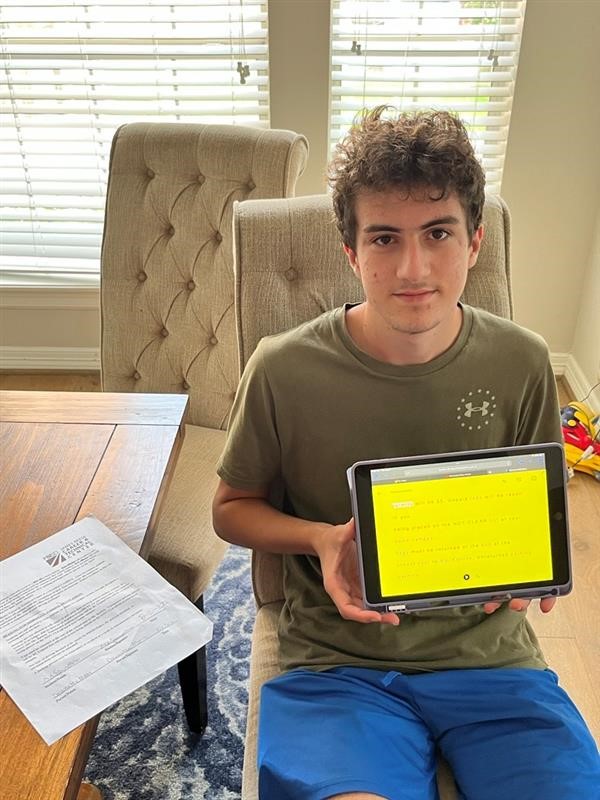The hardest part of living with autism may be convincing others to live (in harmony) with it. Ask any parent whose child uses an Individualized Education Plan (IEP) for autism: you’ll likely hear at least one story about school representatives whose idea of “accommodation” involved forcing the student into a “neurotypical” mold.
If there’s anything worse, it’s living in a neurotypical world with unacknowledged or undiagnosed autism. Even with improved means of recognizing “high-functioning” autism early on, there are still many cases that slip through the cracks. There are also parents who are reluctant to consider autism as the source of a child’s behavior. And there are kids who bow to “act normal” pressure even at very early ages.

But They Always Seemed So Typical!
Even where a “high-functioning” child does fine without individualized accommodations throughout the pre-adolescent years, the veneer frequently cracks around age 13 or 14. Puberty and high school bring a new array of challenges:
- Hormonal changes that generate brand-new emotional and physical sensations
- Increasing pull to fit in with and be accepted by peers (not to mention romantic interests)
- Pressure to “grow up,” take on new responsibilities, and plan for adulthood
- New and pervasive concerns of the present generation: social-media images, gender fluidity, political hot buttons, barrages of information and technological updates
The strongest and most “typical” kids find all this overwhelming. Add in a brain that needs extra concentration and effort to follow a standard conversation, and you have a youngster who needs all the support he or she can get.
Never Too Late to Start
The worst-case scenario, obviously, is all the above plus a totally unsupportive environment: a school with the attitude, “You had a good academic record, what’s the problem now?”; peers who meet “weird” behavior with teasing and bullying; parents or family who just nag about “powering through.” Too often, this proves a road to burnout, mental breakdown, or even suicide.
It doesn’t have to be that way. If you have (or are) a high school student with long-unaddressed autism, it’s never too late to start managing it.
- Any student may begin an IEP during any school year where lack of accommodations is found to impair academic performance. (Students should attend IEP planning meetings with their parents: it’s an important part of mastering communications and independence.)
- Therapy and counseling help students understand and appreciate their best selves. (It’s important to recognize that autism is not simply a “disorder”: you can work with it to optimize creative and analytic skills.)
- For students who struggle in peer relationships, look up programs like Best Buddies Friendship, which introduce students to peers who are ready and willing to help them learn socializing.
- Since long-term employment and independent living mean special challenges for the autistic young adult, high school students need IEPs (and other programs) that address transitioning to adulthood. Look for career-placement and life-coaching programs that focus on the autism demographic.
One Family’s Experience
The following account is from an Easter Seals Greater Houston client whose son was officially diagnosed with autism spectrum disorder in tenth grade. (Currently he is a high school senior.)

Autism was first suspected by Mason’s play therapist, whom we were seeing about his aggressive issues with peers. We decided to have him tested through the school, since private testing was expensive. That was in eighth grade, and the school determined he did not qualify for a diagnosis.
A while later another therapist recommended that we get him tested again, because he was not showing much insight into his behaviors and was difficult to motivate. When grandparents offered to pay for it, we had him tested privately by Dr. Raizner, a pediatric neuropsychologist. While he did not qualify according to the standard autism test, after looking at the therapist and parent reports, she determined that he was on the spectrum.
I would advise that parents follow their gut and the advice of professionals in determining whether to have their child tested—and that your best bet would be a full neuropsychological evaluation, no matter the cost. While it’s cheaper, even free, to go through the school, they only look for autism that affects school functioning. You often have to go beyond that to find out what’s best for your child.
–Dawnette Moore
Resources: Autism Apps for Teenagers
- First Aid: American Red Cross
- Life360: Find Family & Friends (tracks people’s physical locations as well as maintaining virtual contact)
- Social Success (expensive but comprehensive)
- Spotify–Music and Podcasts
- Time Timer and Visual Task Timer

